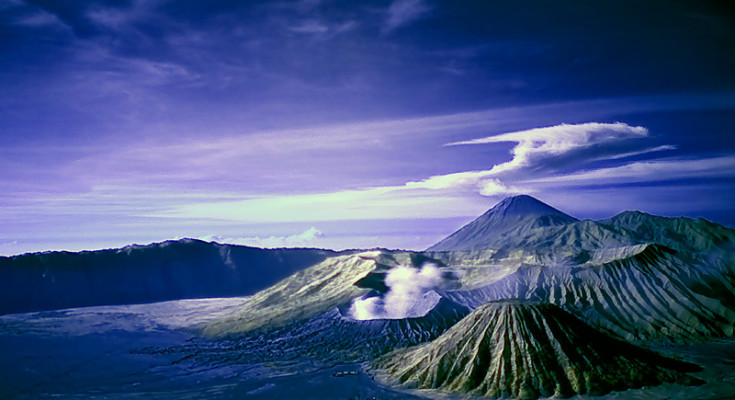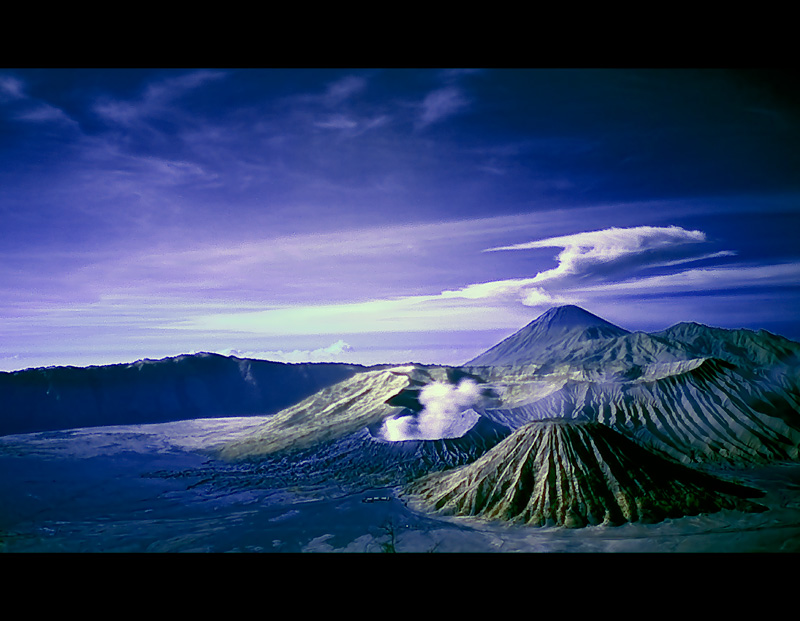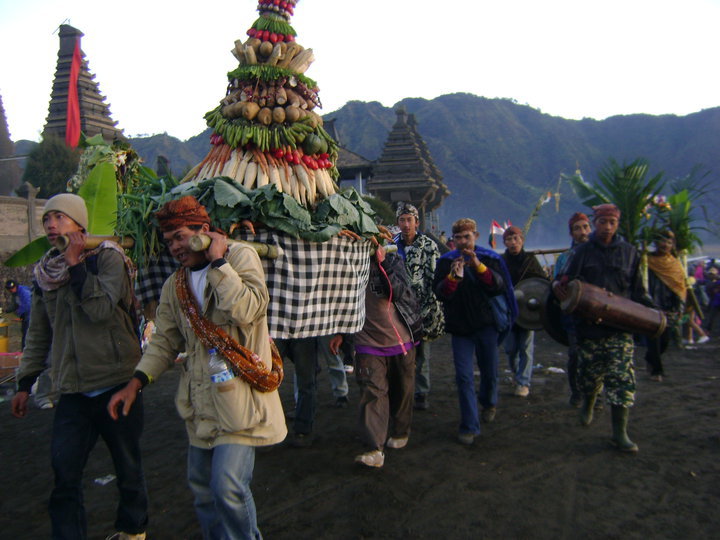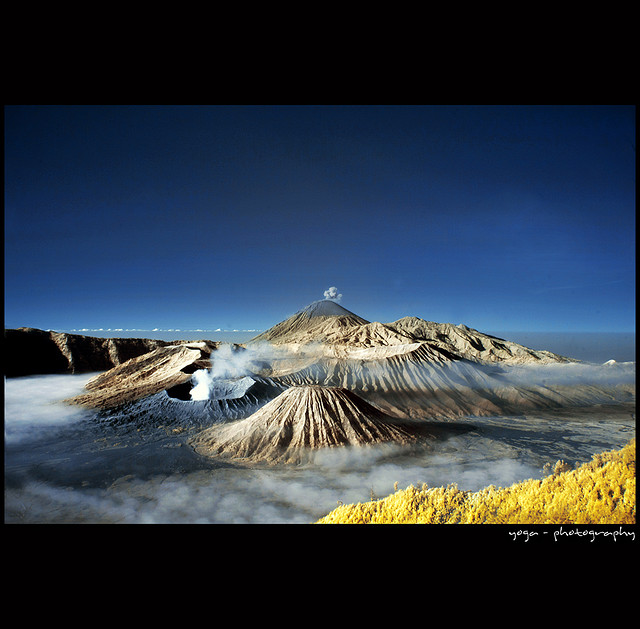By: Jack Lato
People are divided into two categories in regards to their position in time. People that hang on to the past and those that live for the future; the first tend to live as men did decades or possibly centuries ago. The latter focus more on the present and the future.
The Tenggerese at the Bromo Tengger Semeru National Park in East Java, Indonesia possibly belong to the first category. They live the same way as their ancestors; observing cultural traditions, according to the rules set by those before them.
One of the rituals they still observe is Yadnya Kasada an annual sacrificial festival taking place at the crater rim of the Bromo.
Kasada: More than Chickens in a Volcano
Celebrated last Sunday evening to Monday midnight, August 14 – 15 this year, the event actually lasts for a month. This special holy day involves a volcano, the tourist hot spot Bromo, and lots of people throwing stuff in it. Chief of Tourism and Culture of Pasuruan Sub-disctrict, Agung Maryono last Thursday, August 11, 2011 explained some activities and rituals preceded the event. Take a look at this video shot by Madexpat Philips Conner to get an idea of the events taking place:
Tenggerese shamans (dukun) and the guardian of the earth (mangku) hold the Mendak Tirta Rite, whicg entails picking up holy water from the natural springs around. Tenggerese living on Bromo’s eastern side in Probolinggo Sub-district fetch the water from Madakaripura Waterfall and the people around Lumajang take the water from Ranu Pane. Meanwhile the people on the western side of Bromo in Pasuruan and Malang take the water from the spring in the Widodaren Cave.
Shamans from various villages then keep the spring water within the Luhur Poten Temple. The fetching of water coincides with Piodala, the celebration of the temple anniversary. On Sunday, local artists present Tari Tayub (dances) and various performances at the bank of the Bromo caldera.
Before midnight on Sunday, the congregation gathers around the Luhur Poten Temple, in the middle of vast plain of Segara Wedi, (Sea of Sand) at the foothill of Bromo. The senior among the shamans presides the rite, asking the blessing of Sang Hyang Widi Wasa and God of Mahameru. After receiving holy water from their shamans, the mass proceeds along the crater edges, throwing away their ongkek, offerings into the crater. Sacrifices could include agricultural products, cattle, chickens and other things.
Kasada, a celebration based on a legend
Yadnya Kasada is a legend based cultural celebration of the 15th century, when Princess Roro Anteng and her husband, Joko Seger reluctantly met their promise to sacrifice their youngest daughter, Kesuma, their 25th child. Bromo gods and deities had the couple sacrifice their daughter in return for their blessing of giving the couple 24 children after trying painstakingly for years.
While falling into the burning magma, Kesuma cried out loud and advised her parents not to lament over her death. She even had her parents to sacrifice to the gods and deities annually, appeasing them to allow the blessing. This sacrificing to appease ancient deities continues today with the annual Yadnya Kasada ceremony.
Roro Anteng and her husband were the rulers of the region; she was the descendant of the Brawijaya dynasty of Majapahit Kingdom. Joko Seger was the son of a priest, of a high ranking Hinduist cast, Brahma, possibly named after Mount Bromo.
The Tenggerese and their Bromo
The Tenggerese are very proud of their traditions; Strictly observing their traditional Hinduism, it differs from Balinese Hinduism. The old Javanese dialect they speak, represents no social classes as the current Javanese does; no distinction between Ngoko, Kromo and Kromo Inggil, the three different levels of Javanese.
Some of 50.000 Tenggereses live under the spiritual leadership of the appointed shaman. Kasada is the moment of sacrificing and improving their relationship with gods and deities but also the best time to choose their shaman among the congregation. The shaman appointed for each village, has to be able to memorize all the spells and presides all the rituals.
Mount Bromo meassures about 2.770 meters above sea level and is set in the middle of a vast plain Segara Wedi, Sea of Sand. The volcano and the surroundings are part of a natural reservation since 1919. Some people used to take sulfur from the caldera and sell it to companies or agents to make a living. Since it is an active mountain, this is not without risk. In 2004, an eruption caused some damage and killed two people. On the evening of Tuesday, 23 and 26 November 2010, it erupted again. The region experienced the same disaster last 22 to 28 January 2011.
Amid such natural disasters, watching Tenggerese celebrate Kasada shows us that observing traditional heritage sometimes comes at a risk.














